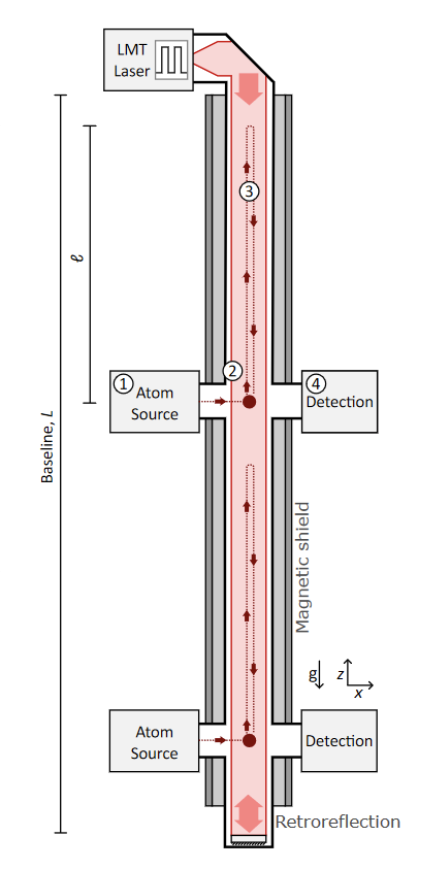
Supervisors: Tristan Valenzuela (RAL/PPD) + t.b.c (Cambridge University)
The AION collaboration [1] develops ultra-sensitive atom interferometers (AIs) [2] that will be used to search for ultra-light dark matter and detect gravitational waves. AION works alongside MAGIS, a US collaboration aiming to install a similar detector at Fermilab (US). Both collaborations are working towards a 100-metre baseline detector as a step towards a 1 km version with sufficient sensitivity to detect gravitational waves in the themid-band from 0.1 Hz - 10 Hz - between the Advanced LIGO and LISA experiments. The AION program was funded in 2021 via the STFC's Quantum Technology for Fundamental Physics call and builds upon strong links between the two collaborations.
The AION detector will use accelerated optical lattices to launch clouds of strontium atoms into the vacuum chamber. Initially close to rest, fine control over the launch conditions is crucial to minimising phase noise. This studentship will develop these techniques with the intention of directly feeding in the results to the 10-metre version of the AION detector planned to be built at the University of Oxford. This work will include using dipole traps, and optical lattices and developing diagnostic techniques. In addition, there is scope for using non-destructive imaging and velocity selection towards this goal.
The work will take place in a sandwich format, with time at the Rutherford-Appleton Laboratory & Cambridge University, and the opportunity to visit institutions abroad to ensure good integration of the student into the relevant engineering teams and other partners.
For more details, contact Mark Bason, mark.bason@stfc.ac.uk or Ulrich Schneider, uws20@cam.ac.uk .
[1] https://arxiv.org/abs/1911.11755
[2] https://link.springer.com/article/10.1007/BF00325375
